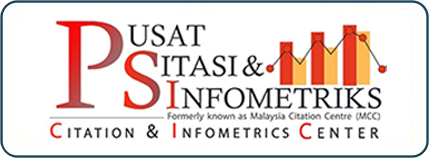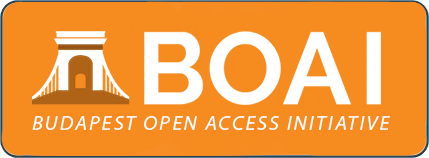Zakat-Based Microfinancing: Insights from The Melaka Islamic Religious Council (MAIM)
DOI:
https://doi.org/10.33102/jfatwa.vol30no1.659Keywords:
Islamic Microfinance, Zakat , MAIM, Micro-Entrepreneurs , ChallengesAbstract
Islamic microfinance serves as a crucial tool for empowering marginalized and underserved populations by providing financial access for entrepreneurial activities, thereby contributing to poverty alleviation. Despite its recognized potential, the accessibility of Islamic microfinance remains limited due to funding constraints, prompting innovative approaches such as the use of zakat funds. Among the earliest institutions in Malaysia to implement zakat-based microfinance, the Melaka Islamic Religious Council (MAIM) adopted the qard al-hasan (interest-free loan) model to support small-scale entrepreneurs from the asnaf community. While this initiative showcased significant potential for enhancing financial inclusion and socio-economic development, its sustainability faced considerable challenges. This study utilizes qualitative methods, including semi-structured interviews and content analysis to examine MAIM's experience in implementing zakat-based microfinance. The findings identify critical barriers, such as community misconceptions, managerial shortcomings, and resource limitations, which contributed to the zakat-based microfinance program's discontinuation. By addressing these challenges, the study offers practical recommendations to strengthen the sustainability and impact of zakat-based microfinance initiatives. This research provides valuable insights into the integration of Islamic social finance principles within microfinance frameworks to achieve sustainable poverty alleviation and socio-economic development.
Downloads
References
Ahmed, Habib. 2002. “Financing Microenterprises: An Analytical Study of Islamic Microfinance Institutions.” Islamic Economic Studies 9(2): 27–64.
Berg, Bruce L. 2001. Qualitative Research Methods for the Social Science. 4th ed. Needham Heights, MA: Pearson.
Bhuiyan, Abul Bashar, Chamhuri Siwar, Abdul Ghafar Ismail, and Normah Omar. 2017. “The Experiences of The Grameen And Islami Bank Microfinance on The Poverty Alleviation in Bangladesh.” Journal of Islamic Economics, Banking and Finance 13(3): 64–81.
Chapra, Muhammad Umar. 1979. Objectives of the Islamic Economic Order. Leicester. The Islamic Foundation.
Hassan, Abul. 2015. “Financial Inclusion of the Poor: From Microcredit to Islamic Microfinancial Services.” Humanomics 31(3): 354–71.
Jimoh, Abdulrazaq Taiye, Kayode David Kolawole, and Dayo Bamigbade. 2024. “Islamic microfinance as a panacea for poverty alleviation”. European Journal of Islamic Finance 11(1): 17-30.
Karim, Nimrah, Michael Tarazi, and Xavier Reille. 2008. 49 CGAP Focus Note 49 Islamic Microfinance: An Emerging Market Niche. Washington D.C.
Karlan, Dean, and Nathanael Goldberg. 2011. “Microfinance Evaluation Strategies: Notes on Methodology and Findings.” The Handbook of Microfinance: 17–58.
Khandker, Shahidur R. 1996. “Grameen Bank: Impact, Costs, and Program Sustainability.” Asian Development Review 14(1): 65–85.
Kiiru, Joy Mueni Maina. 2007. “Microfinance: Getting Money To the Poor or Making Money Out Of the Poor?” Finance & The Common Good 2(GOOD/BIEN COMMUN-N° 27): 64–74.
Lone, Fayaz Ahmad. 2016. 17 Islamic Banks and Financial Institutions: A Study of Their Objectives and Achievements. Hampshire: Palgrave Macmillan.
MAIM. 2020. “Latar Belakang MAIM.” https://www.maim.gov.my/index.php/my/?id=73 (November 15, 2020).
Majah, Muhammad Ibn. 2007. Sunan Ibn Majah. eds. Hafiq Abu Zubair `Ali Za’i, Nasiruddin Al-Khattab, and Abu Khaliyl. London: Maktaba Darul Salam.
Md Yusof, Syarifah, and Raziah Md Tahir. 2015. “Analisis Tafsiran Asnaf Al-Gharimin Di Malaysia.” International Journal of Management Studies 22(Special Issue): 81–100.
Mohammad, Mustafa Omar, and Syahidawati Shahwan. 2013. “The Objective of Islamic Economic and Islamic Banking in Light of Maqasid Al-Shariah: A Critical Review.” Middle-East Journal of Scientific Research 13: 75–84.
Otero, Maria. 1999. “Bringing Development Back, into Microfinance.” Journal of Microfinance 1(1): 1–10.
Rahman, Abdul Rahim Abdul. 2007. “Islamic Microfinance: A Missing Component in Islamic Banking.” Kyoto Bulletin of Islamic Area Studies 2: 38–53.
Rozi, Muhammad Fakrur, Mashudi, and Qamarul Huda. 2024. “Program Innovation in the National Amil Zakat Management System: A Step Towards Enhancing the Welfare of Mustahik”. Perisai: Islamic Banking and Finance Journal 8 (1): 31-53.
Sani, A’ieshah Abdullah, Amilia Saidin, Siti Azrina Adanan, and Khair Syakira Bustamam. 2019. “PERFORMANCE MEASUREMENT SYSTEM USING BALANCED SCORE CARD: A CASE STUDY IN PUSAT ZAKAT MELAKA, MALAYSIA.” Journal of Islamic Philanthropy & Social Finance 1: 15–29.
Sekaran, Uma, and Roger Bougie. 2016. Research Methods for Business: A Skill-Building Approach. 7th ed. West Sussex: John Wiley & Sons.
Siwar, Chamhuri, and Basri Abd. Talib. 2001. “Micro-Finance Capacity Assessment for Poverty Alleviation: Outreach, Viability and Sustainability.” Humanomics 17(1): 116–33.
Thaidi, Hussein ‘Azeemi Abdullah, Muhamad Firdaus Ab Rahman, and Azman Ab Rahman. 2019. “Analisis Strategi Pemerkasaan Asnaf Fakir Dan Miskin Berdasarkan Hadis Lelaki Anṣār.” Journal of Fatwa Management and Research 17(2): 446–57.
Thaidi, Hussein ’Azeemi Abdullah. 2018. “How Can Maqāṣid Al-Sharīʿah Contribute to the Development of Islamic Microfinance? A Study of the Theory and Its Application in Practice by Amanah Ikhtiar Malaysia.” University of Aberdeen.
Thaidi, Hussein ’Azeemi Abdullah, Ahmad Zaki Salleh, and Muhamad Firdaus Ab Rahman. 2023. “Addressing Challenges, Unleashing Potentials: Towards Achieving Impactful Islamic Social Finance.” Ulum Islamiyyah 35 (2): 63-83.
UNDP. 2019. Human Development Index 2018. New York: United Nations Development Programme.
Wahid, Abu N. M. 1994. “The Grameen Bank and Poverty Alleviation in Bangladesh: Theory, Evidence and Limitations.” American Journal of Economics and Sociology 53(1): 1–15.
World Bank. 2015. 1 Statewide Agricultural Land Use Baseline 2015 The Little Data Book in Financial Inclusion. Washington: The World Bank.
Yoshino, Naoyuki, and Peter J. Morgan. 2018. “Financial Inclusion, Financial Stability and Income Inequality: Introduction.” The Singapore Economic Review 63(1): 1–7.
Downloads
Published
Issue
Section
License
Copyright (c) 2024 Hussein 'Azeemi Abdullah Thaidi

This work is licensed under a Creative Commons Attribution 4.0 International License.
The copyright of this article will be vested to author(s) and granted the journal right of first publication with the work simultaneously licensed under the Creative Commons Attribution 4.0 International (CC BY 4.0) license, unless otherwise stated.















